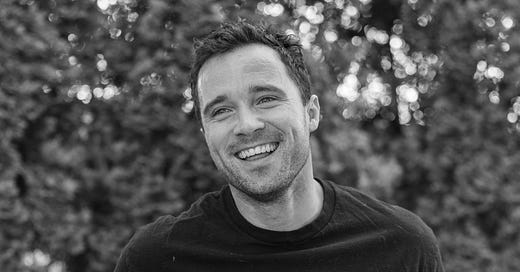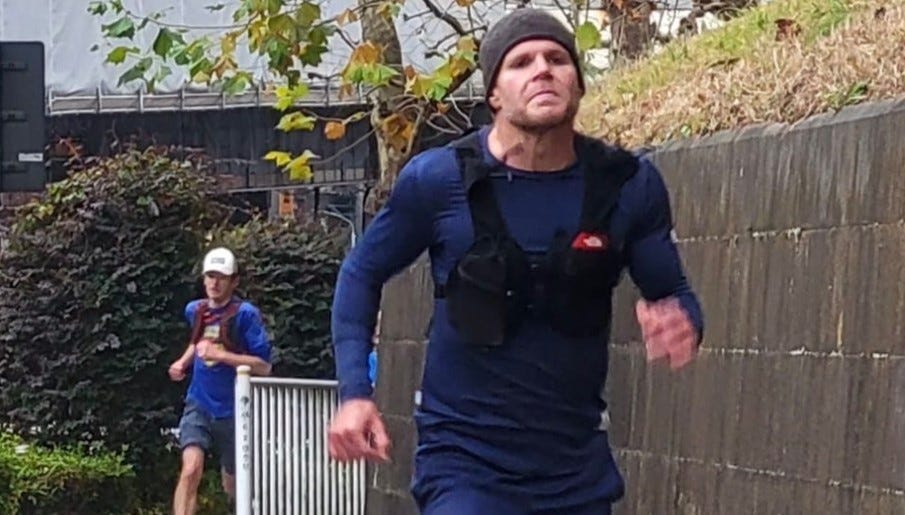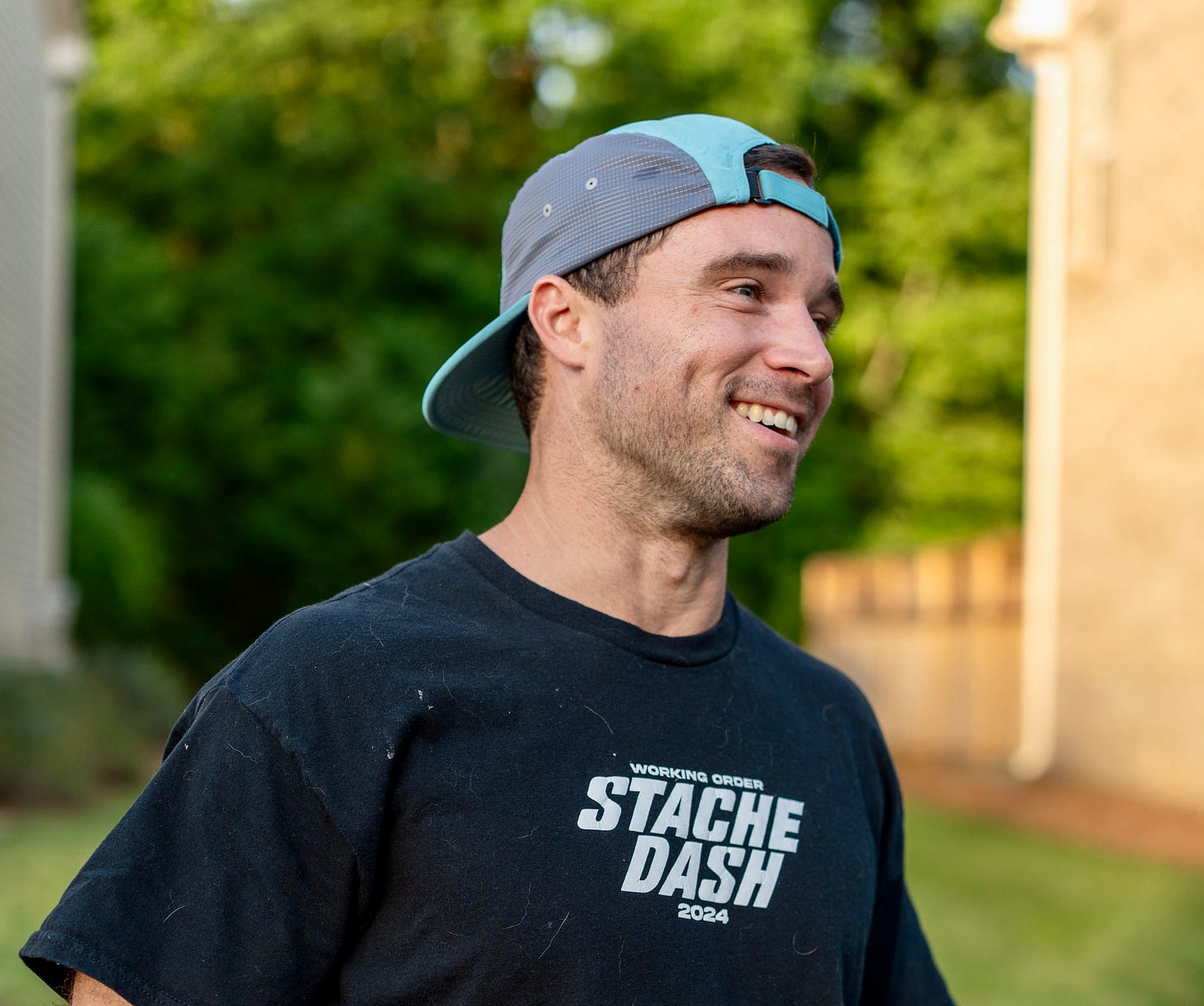The importance of adventure - how Jake Griggs has embraced challenge
From hiking, running and swimming to telling other people’s stories, Jake has made adventure a way of life
Running Tales on Substack is a reader-supported publication. We make no money from advertising.
Please consider donating to help us do what we do ☕️

There’s a section of the Grand Canyon called ‘The Box’.
It’s notorious for being the hottest and most dangerous part of the canyon, with walls towering over the trail enclosing anyone crazy enough to be in the narrow passage and trapping them in the heat.
Jake Griggs has just made it through the inferno of ‘The Box’ as part of the Rim to Rim, a 24-mile run across the Grand Canyon.
But he’s about to go from the frying pan into the fire.
As Jake and the group of fellow runners he is travelling with move out of ‘The Box’ they find themselves exposed to the full heat of the sun.
At the same time, because they were moving slower than planned while in the depths of ‘The Box,’ they have run out of water.
It is around four miles to the next aid station, but for Jake this is his time.
Taking on such extremes is all part of his desire to embrace at least one physical challenge every year.
That aim has seen him hike across the Andes to Machu Picchu, walk solo through the Scottish Highlands, run the Rim to Rim, and swim in the Mediterranean.
He has also climbed Mount Rainier in the US and trekked through Patagonia, with his next challenge set to be a 100 mile bike ride through California in October.
Although running is an important part of Jake’s health regime, he doesn’t like to get stuck on one sport or form of exercise.
“I love to jump around and try out different things because I found that the lessons learned transcend no matter what activity you're doing,” he said.
‘I didn't even think about miles, time, or heart rate’
Jake told Running Tales he grew up playing football - or soccer as he calls it over in his home in America.
“Running was obviously just a part of the game,” he said, adding that aside from some track athletics in high school, it wasn’t until college that he started to take part in the sport more.
At that point, he used it as something therapeutic: “I could just strap my shoes on and go out the door to decompress from studying or to celebrate or just to clear my head.
“I would throw music on, and I would just go. I didn't even think about miles or time, I didn't think about heart rates. I just went out there.”
It was a habit that stuck with him through his twenties, and even now - as he takes on increasingly extreme challenges, he still uses running as a way to “have fun, just to get outside, feel alive and to clear my head’.
These days, he doesn’t even wear a watch when running, preferring to “dial in” to the world around him.
Despite that, Jakes admits he is more than capable of giving into his inner competitive nature, both with himself and occasionally with others.
“I am competitive by nature,” he said. “As I've got older, I've become more competitive with myself more than anything.
“Don't get me wrong. If I see or hear somebody sneaking up behind me, I can't help the urge to maybe kick it into another gear.
Also on Running Tales:
How 'Mr Slow Easy Comfortable' runs slower and lifts weights to go faster
Start with “stupid” and end in success… What does it take to complete a 145-mile race?
Bill McKim: The Olympic runner who needed a push to go to the Games
“But these days it's when I know I’m underperforming or could go one more step or one more mile, that's usually where my competition really comes out.
“One of the things I've learned through running in all these challenges is that it's more a mental game than anything. The competition is a negotiation with yourself.
“Once I get into the point in the challenge or a run where I might think about slowing down or stopping, that's where the competition really seems to come out. And it's like, okay, here we go. Now it's time to kick it in.”
The wonder of physical challenge:
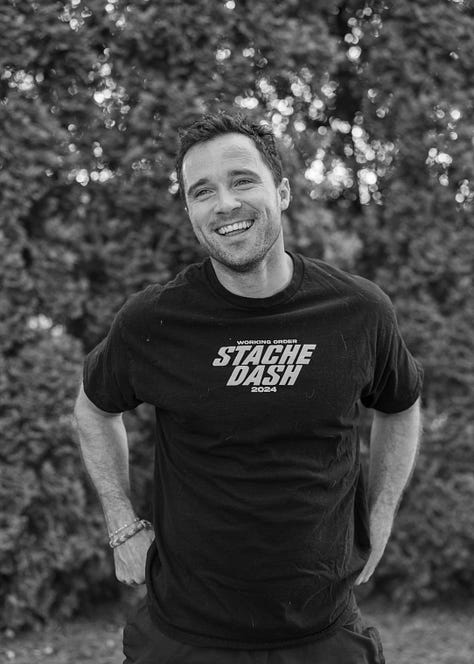
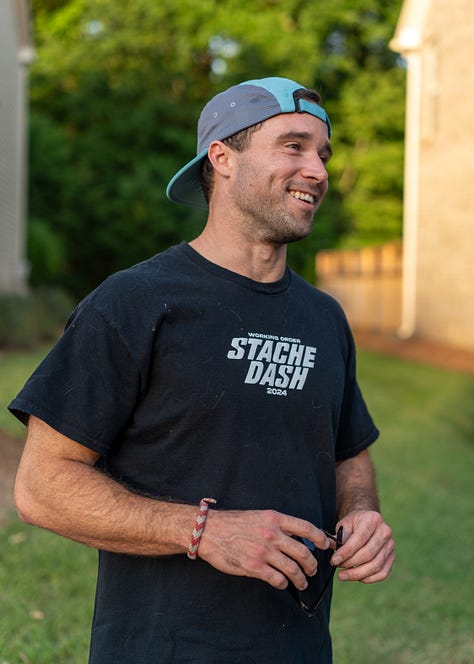
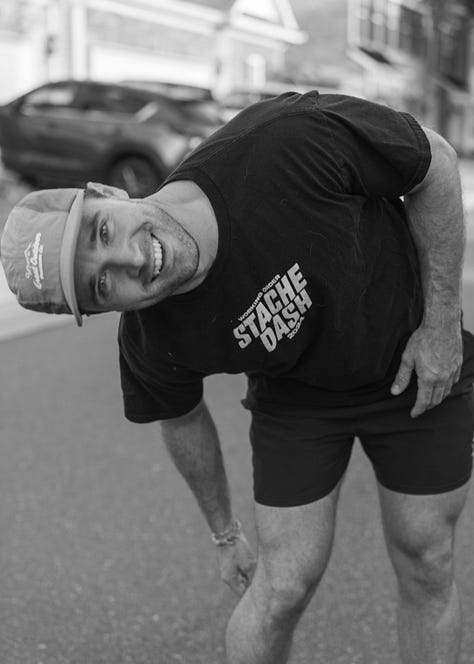
Jake, who also writes a newsletter telling the stories of other incredible athletes and their achievements, first started thinking about taking on increasingly challenging events in 2018, with one of his first activities seeing him trekking the Inca Trail to Machu Picchu.
It was while taking on that remote, but relatively well-trodden path, that he began to think about taking on greater and greater adventures.
He was also inspired by American entrepreneur and public speaker, Jesse Itzler, who preaches a mantra of taking on remarkable feats and is an ultra marathon runner himself.
“Since then, I’ve committed to one adventure per year. I tell myself I'm going to train for something specific and I'm going to knock it out the park,” Jake said.
The challenges Jake has taken on extend far beyond the world of running, and his aim is to be constantly moving outside of his comfort zone and pushing new boundaries.
He said: “Physical challenges are so wonderful because they really push you to the limits.
“I just interviewed this woman who had this brilliant quote. She said that you reach a certain level of exhaustion where the things that really need to focus on come to the fore because the noise of your everyday is stripped away.
“You really have the space to navigate whatever it is that's going on internally or in your life.”
Jake said such challenge teaches not only lessons to take on the next physical test, but to confront the ups and downs life comes with.
“I try to do a challenge that I think is one or two steps outside of my comfort zone,” he said. “That was the case with backpacking solo in Scotland.
“I was properly intimidated by that. But then you come away and you're like, I did it.
“I've just set a new standard. I've just set a new threshold, and you've changed because of that.
“And so the biggest lesson for me is always that I can draw more from my well, I can do more than I thought I was capable of.”
Embracing the fun of ‘the suck’:
It is that idea of doing something different which has pushed Jake towards his next test, a 100-mile bike ride.
While to some it may not seem to have the initial fear factor of running across the Grand Canyon or hiking across remote landscapes, it comes with the huge caveat that Jake had never previously cycled more than 15 miles.
“Fifteen up to 100, that's a pretty large gap,” he said. “But I'm confident I can train and can get through the training because I've had these other experiences now.
“It’s always hard. There's always days where I'm thinking, this sucks, or I don't want to do it.
“Last night, I had an hour-and-a-half of a normal bike ride, and everything was going wrong.
“It was a bad ride by all accounts. But, you get through it and move on and you always try to take something from that.
“It’s never like a linear thing. but that's what you sign up for, right? That's part of the fun.”
‘Inspire me first, then give me the tools’:
As well as his own adventures, Jake helps other athletes through his own coaching - he says seeing the athletes he trains succeed is “wonderful” - and writes his own newsletter on Substack.
The Working Order newsletter is focused on ordinary people doing extraordinary things with their fitness.
He said: “The aim is to tell the background of the athlete and the background of whatever challenge it is that they're pursuing.
“And then the idea is to really balance that inspiration within more practical information.
“So you have the background, but then you go into what was their training like, what was their nutrition strategy like, what was their gear kit like, and then what were the major takeaways or lessons they learned from that experience.”
Jake said a lot of information on many running websites, blogs and podcasts is very practical and rational.
But he added newer runners can be put off when publications start talking about pacing, splits or VO2 Max.
He said their view is often, “inspire me first, and then give me the tools second.”
“One of the best conversations I've ever had for my newsletter was a woman that walks every day,” he added.
“I think she's already walked the circumference of the earth, an astronomical number. Walking is her meditation, that is her practice.
“And it was one of the most fascinating conversations. Walking is the definition of simple, but it's not easy. The fact that she's been doing this every day for years was so impressive.”
‘Adventure is closer than you think’:
Impressive. It’s a word that comes to mind throughout Jake’s story, from his desire for adventure to the tales of those people he writes about.
And impressive was covering those four water-less miles across the Grand Canyon to that next aid station.
Because despite the hurt, the pain, the aching limbs and the intense heat, Jake and his friends completed that run.
He told Running Tales: “That was such a memorable experience for so many reasons.
“I did it with a great group of people. There were several who had never run longer than 10k on the road.
“And they were like, yeah, I'm going to run across the Grand Canyon. Let's go.
“Watching their progression was a joy. I learned so much about myself and about how to approach certain situations.
“The Grand Canyon is beautiful. And, there were so many highs and lows emotionally and physically.
“Then you get to the end and that emotion hits you. I cried at the end. You spend so long preparing for that moment and then it's done and you just sit back and think, ‘that was awesome’.
“One of the best lessons I learned from the Grand Canyon was that the best way to get through that scenario was to stop focusing on myself.
“Everybody’s hot. Everybody’s tired and sore. So how can I help others?”
“You know, whatever adventure lies on your horizon, the first step is the most crucial. And I wish you the best because objects in the mirror are closer than they appear.
“That adventure is closer than you think.”
Thanks as ever for reading and listening to Running Tales. We couldn’t do this without your support - please back us to keep going by…
Have you read our article with Joe Hardin? Joe hit more than one rock bottom before a phone call to his ex-wife sparked his journey to sobriety. His is a truly inspiring story - you can read it here:
Sobriety, running and podcasting - the Joe Hardin story
Running Tales on Substack is a reader-supported publication. We make no money from advertising.

